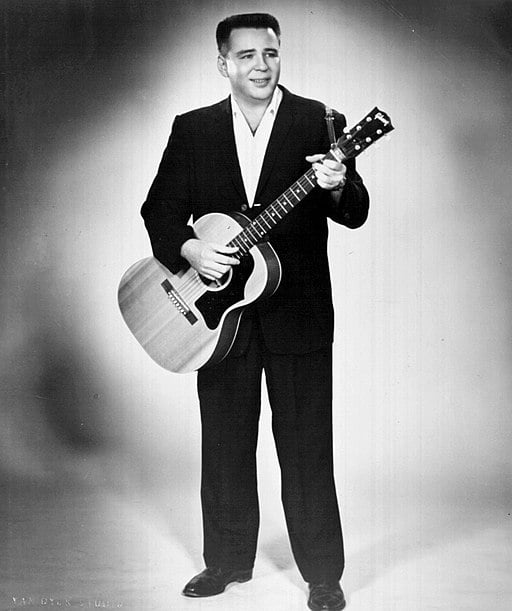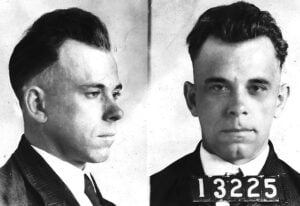The day the music died
The tragic loss of three music icons. The plane crash became the inspiration for the song “American Pie.”

exc-5bc671db104c7bf5cc893830
“I can’t remember if I cried
When I read about his widowed bride
Something touched me deep inside
The day the music died.” – Don McLean on the hit song “American Pie.”
Wreckage of the plane. Photo taken the morning of the crash.
The Winter Dance Party Tour
The day the music died began on Groundhog Day, February 2, 1959. Musicians Buddy Holly, the Big Bopper, Ritchie Valens and Dion were on a rickety school bus slogging down a two-lane highway towards Clear Lake, Iowa.
Bill Griggs, a Buddy Holly historian described the Winter Dance Party Tour. ”It was like they threw darts at a map. . … The tour from hell — that’s what they named it — and it’s not a bad name.”
The musicians were cooped up in a refurbished school bus. It wasn’t their first bus. The frigid winter and mechanical problems sidelined five different buses. There weren’t any roadies to lug around their gear. The heaters sputtered out multiple times, Meanwhile, Dion lit newspapers on fire to stay warm. The below 40-degree weather discolored Buddy Holly’s drummer, Carl Bunch’s foot. He left the band to be treated for frostbite. Downed trees laid across highway lanes. Ice turned the roads into a slip-and-slide, while the troupe pushed on, playing nightly shows scattered hundreds of miles across Siberia of the Midwest.
Minnesotans, Wisconsinites, etc., felt like it was just another winter. Buddy Holly was from Texas. He didn’t grow up with the stinging winds of the north. Californian, Ritchie Valens, a 17-year-old artist making waves in the music industry, forgot to pack a coat.
Buddy Holly
1,000 giddy teenagers flooded into the Surf Ballroom for the Winter Dance Party tour, unaware they were about to witness a moment in rock n’ roll folklore.
The Concert
The live music energized the teenage spirit. The hordes of teenagers danced and snapped their fingers to Buddy Holly’s That’ll Be the Day and Peggy Sue. Ritchie Valens’ La Bamba and the Big Bopper’s Chantilly Lace had them on their feet. The acts joined together for a final song.
The teenagers, walked out of the Surf Ballroom apprehensively, lighting cigarettes and hopping into their parents’ Buicks and Chevrolets with their friends and dates.
While the laughs and the visions of blue jeans and skirts faded, the exhausted musicians packed up their instruments.
The Big Bopper
The Fateful Plane Ride
The hundreds of miles racked up from the previous days, deflated the vitality Buddy Holly needed to energize crowds. Frustrated, he refused to ride another 400 miles. He needed rest and was anxious to wash his clothes before the next show in Minnesota.
Buddy told the other musicians he booked a private plane to Fargo, ND. It cost $100 for the four-seat plane. Dion refused a seat. Earlier he heard from his family on the East Coast. Because of his unstable father, they weren’t able to pay the rent. By divine intervention or sheer coincidence, Dion’s family needed exactly $36, the exact cost of his portion if he boarded the plane. Valens, who complained on the tour about being unlucky, pulled out a coin and called heads, winning the toss and taking Holly’s guitar player, Allsup’s potential seat. The future country music legend and Buddy’s bass player, Waylon Jennings, gave up his seat to the sick Big Bopper.
Buddy Holly turned to Waylon. “I hope your bus freezes.”
I hope your plane crashes.” Waylon replied with a smile.
Buddy Holly, Ritchie Valens, the Big Bopper, and their pilot 21-year old Roger Peterson boarded a red, four-seat, single-engine plane at an airport in Mason City. The plane was equipped with new instruments that Peterson was likely unfamiliar with.
The plane lifted off the runway around 1 AM.
The snow-packed clouds blinded the plane.
Moments later the plane dipped down through the clouds. The plane smashed into a field near Clear Lake, Iowa. Buddy, Valens, the Big Bopper, and Peterson were killed instantly.
(There have been recent investigations into the incident.)
Fans and Family Mourn
Buddy’s pregnant wife, María Elena Holly, turned on the tv in their Greenwich Village Apartment. In a stoic tone, a news report announced Buddy’s death. It was the first time she heard about the crash. Buddy Holly’s mother also first heard the news on the radio and she collapsed. A few days later, Maria Holly suffered a miscarriage.
Ritchie Valens’ gravestone.
The young Don McLean was folding newspapers for his newspaper route. He glanced at the page. His musical idol was dead. Years later McLean, recalling the tragic crash, wrote the 1971 Hit-song American Pie. American Pie became a staple in American culture as a metaphor for a loss of innocence starting with the death of Buddy Holly and moving through the turbulent 1960s.
In Liverpool, Paul McCartney and George Harrison huddled around a newspaper with fellow schoolboys, reading about the crash. The Beatles, all being fans of Buddy Holly named their band after Buddy’s backing band, the Crickets.
The Musicians’ Legacies
The three musicians in the crash left a permanent indentation in the fabric of American music. Valens, became an icon for Chicanos while introducing Latin American music to audiences nationwide, and opening the door for other ethnicities to enter the Rock N’ Roll scene.
The Big Bopper’s songwriting created hit songs including George Jones’ White Lightning, and his recording-breaking stint on the radio became legend.
Buddy Holly’s pioneering style transformed Rock N’ Roll music. He brought the two guitars, one bass, one drummer, and a singer setup to the forefront. His unique, acrobatic voice landed him on Rolling Stone’s best singers list. While his thick-rimmed Wayfarer glasses and confident stage presence inspired a generation.
Buddy’s guitar playing was the lynchpin of his music. His aggressive, twangy rhythms inspired future rockstars to pick up Fender Stratocasters and rock, while Holly’s simple chord progressions made the music accessible to the masses.
What if Buddy Holly Didn’t Board the Plane?
Holly’s death has posed a question that critics and music fans have pondered for decades. What if he didn’t board the plane?
His later recordings were lush and intricate. Holly fell in love with the jazz and folk music in Greenwich Village, and one can only imagine where his new influences would’ve taken him.
Burial and Backlash
While the tour slugged on for a few more dates after the crash, Buddy Holly was buried in his hometown of Lubbock, Texas. Valens’ remains were buried in Mission Hills, California, and the Big Bopper’s remains were buried in Buffalo, New York. 21-year-old Peterson’s remains were laid to rest in Iowa.
The crash also incited anger in fans. Fans blamed Peterson and Jerry Dwyer, the owner of the plane. Up until Dwyer’s death in 2016, he received angry calls saying “You killed Buddy Holly!”, and death threats. Dwyer was later sued by the Valens family for $1.5 million. They settled out of court.
Today, there are multiple memorials, including a four-foot-tall granite outside the Surf Ballroom. There’s also a sculpture of Buddy Holly’s famous Wayfarer glasses near the crash site that cemented the phrase “the day the music died.”
Their souls live on in the DNA of American music. Rave on.








